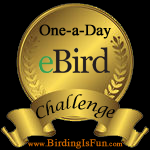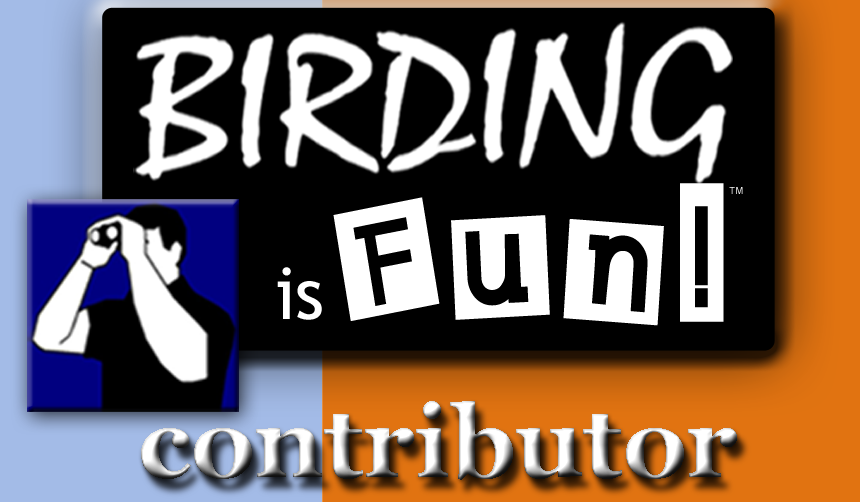Jon Young,
What the Robin Knows: How Birds Reveal the Secrets of the Natural World, Houghton Mifflin Harcourt.
Julie Zickefoose,
The Bluebird Effect: Uncommon Bonds with Common Birds, Houghton Mifflin Harcourt.
John Muir Laws,
The Laws Guide to Drawing Birds, Heyday.
2012 has been a great year for bird book publishing, with many worthy books to enjoy, but the three books covered here stand out to me as groundbreaking in that they have the power to fundamentally change how you see and enjoy birds.
What the Robin Knows--I've already
mentioned this book before, and the more time I've spent with it, the more I like it. But even better, the more it has changed the way I go birding. While I haven't yet designated a sit spot and committed myself to sitting and fully exploring the world of my backyard birds, I have slowed down and spent more time sitting and watching. I've also found myself pausing while birding and listening more to take in what is going on around me. I've also become more aware of how my actions are influencing the birds I am trying to find and enjoy. Just yesterday I was walking and found myself caught up in my own thoughts and not finding anything. I stopped, refocused, and within a minute had clued in on a flock of juncos and several other birds nearby. I changed my gait and my pace, and enjoyed more birds in a few minutes than I had in the previous hour.
What the Robin Knows provides a great introduction to what tracker, nature educator, and author Jon Young calls bird language--the way birds communicate and respond to their environment. By better understanding what the birds are doing, and what they are responding to, birders and nature enthusiasts can a) find more birds, b) see more secretive wildlife, and c) become more in tune with their local landscape and environment. I enjoyed Young's anecdotes of experiences with bird language from New Jersey (where he grew up and I now live) and the Pacific Northwest (where I grew up and Young now lives), but the lessons his experiences teach are useful wherever you may live.
The book, and accompanying web-based sound files, instruct the reader and listener how to hear and interpret various vocal cues including alarm calls from common birds. Also very attractive and instructive are a series of illustrations showing typical bird responses to intrusions or interruptions in their environment. My favorite is the Bird Plow--the widespread fleeing of birds before the arrival of oblivious hikers or walkers. Since reading this book, I've seen this in effect a lot in public places. I've also seen most of the other 11 major bird responses illustrated and described in the book. As I've learned to pay attention to these birds, and as I try to walk in a way so as to avoid provoking the most severe responses, I've found myself enjoying nature more and seeing more birds and other wildlife. Several times in the past month, I've found myself freezing, looking up, and looking right into the eyes of a red or gray fox that I otherwise hadn't noticed. Very cool.
 |
| The Bird Plow--birds fleeing from an oblivious walker |
I recommend What the Robin Knows for everyone who enjoys birds, or wants to better connect with their wild side. Birders will find a greater appreciation for their quarry as well as a tips on improving their field skills--especially birders like me who sometimes need to slow down and pay more attention to the birds around me. Backyard birders and the general public will also have their eyes open to a whole new world of birds and how they respond to us and our shared environment.
The Bluebird Effect--When I was working on my dissertation on urban bird conservation, I was enchanted by an NPR piece that Julie Zickefoose produced about her experience with baby hummingbirds. I was fascinated by the insights that bird rehabilitators gain from their close interactions with birds. While my chapter on bird rehabilitators never made the final draft of my dissertation, I've continued to be fascinated by the stories I hear from bird rehabilitators.
In
The Bluebird Effect, Zickefoose gives us her best work yet--including amazing stories of birds she has known and usually helped as a rehabilitator. By getting as close as she does, she is able to often come to know birds as individuals. I've always been a sucker for this kind of intimate bird knowledge, and Zickefoose clearly delivers! Her stories are not only charming, but when you step back and realize how carefully she has observed--and recorded--her observations, it is an inspiration for us all to more carefully observe and record what we are seeing.
 |
| Baby American Robin sketches and notes by Julie Zickefoose. |
In addition to stories,
The Bluebird Effect is lusciously illustrated with her sketches and paintings of the birds she knows. I think the sketches here are her most beautiful and enjoyable art yet. They capture the moments and personality of the birds better than many more "finished" bird portraits. I've spent a lot of time just flipping through the book enjoying these sketches and smaller paintings. They make me wish I'd spent more time over the years working on my own artistic skills.
The Laws Guide to Drawing Birds--As if to answer that desire, John Muir Laws has put out perhaps the most visually stunning bird book of the year, an insanely beautiful and useful guide to not only drawing and painting--but seeing birds. If you've ever wanted to be a bird artist, or to just better see and know the birds around you (like Julie Zickefoose), this is the guide for you. Even if you don't want to draw birds, you won't be able to put this book down because it is just so amazing. Muir walks you through not only how to erdraw birds, but how to see them and understand why they look the way they do.
Perhaps my favorite illustration in the book is a "cutaway" view of a Hermit Thrush, showing the tiny naked bird body inside the fluffy feather coat (below).
 |
| John Muir Laws cutaway view of a Hermit Thrush. See more of this at his website. |
You've got to see this book to fully appreciate it. There are quite a few pages viewable on
Amazon. Take a look and enjoy! Then get the book! You can also see a lot of Laws' work and get some drawing lessons at his
website.
My wife suggested I give this book to our kids for Christmas. Heck no! Maybe they can borrow it from me, but I'm keeping it for myself!
New Year's resolution for 2013--spend more time sitting and watching bird language, take better notes of bird behavior, and draw more birds. These three books will be my guide. Perhaps you'd enjoy taking these books for a ride as well!
Disclaimer
Review of What the Robin Knows and the Laws Guide to Drawing Birds based on review copies provided by the publishers. The Bluebird Effect reviewed from a library copy, hopefully Santa will bring me a copy for myself!





















































